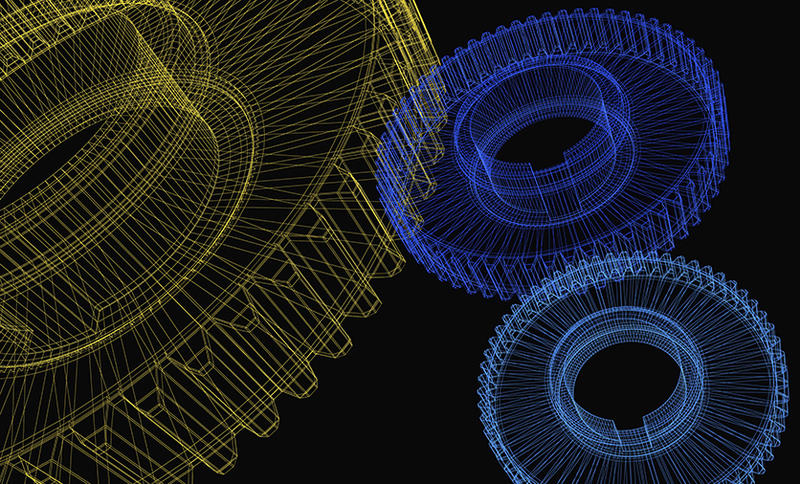There is often the high-level assumption with additive manufacturing (aka, 3D printing) that once you have the data from whatever modeling source, you just have to import the data, make a few adjustments and hit print. But often the source files are not truly print ready. Moreover, just because it is additive manufacturing, does not mean there isn’t a process to make the model manufacturing ready.
Preparing the Files
Once the file has been translated, the data needs to be processed to ensure a sufficient quality for manufacturing. For example, a model may need to be made water tight, have its walls thickened, and other steps performed to ensure it is manufacturable. In this case, polyhedral healing of the model data is critical and best done with reference back to the original B-rep data. This healing process may require some manual guidance, but the more automated the better.
Given most 3D printers’ relatively low resolution, it does not make sense to work in micron resolution with a 3D polyhedral model, processing data that is orders of magnitude more precise than what can be printed. The complexity/resolution of the model needs to be reduced through a process known as decimation where the overall polygon count is reduced, easing processing burden.
Orientation for Printing
The orientation of the model must be optimized for the printer and for situations where multiple copies are printed at the same time. Proper orientation reduces print times, takes advantage of printer characteristics to improve part strength, and can reduce or even eliminate the need for support structures and post-print processing. This type of reorientation in 3D requires sophisticated modeling capabilities.
Piece Part Support
During the manufacturing process, the part requires support structures until the material has solidified and is able to support itself, similar to how supports are needed when constructing an upper floor. Depending on the complexity or size of the part, support structures must be added during manufacturing prep. The amount of material used for these structures must be minimized to reduce waste, improve printing times, as well as reduce the time spent to remove the support structures post printing.
Offset
Offsetting a polyhedral model is a crucial step to ensure manufacturability as well as part reliability. While a model may appear manufacturable, it cannot be printed (or meet the intended design specifications) without the appropriate thickness applied to all faces and edges, added through a process called offsetting.
Slicing the Model
A piece part is printed a layer or slice at a time. Correspondingly, the 3D model has to be sliced to match the manufacturing resolution of the printer. The best accuracy is achieved when each slice is represented as a polyhedral model. Moreover, the individual slice may require additional healing before export.
After slicing and healing, the exact X, Y, and Z points where the printer will deposit material must be calculated. This data is then fed to the printer.
Polyhedral Modeling and Bespoke Manufacturing
Accurately and quickly processing a piece part through the additive manufacturing prep flow is essential for bespoke manufacturing (mass customization). Generating each customization requires the ability to create, edit and modify a baseline part, then processing that part through the entire prep flow. Representing the piece part as a polyhedral model allows for efficient healing, offsetting and slicing, enabling effective mass customization.








.jpg?width=450&name=Application%20Lifecycle%20Management%20(1).jpg)






